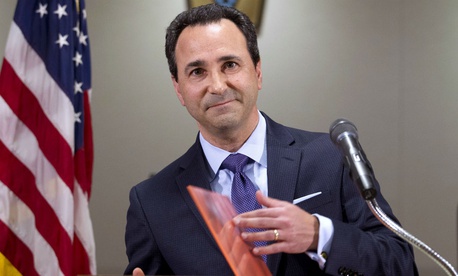March 9, 2020
Last week we and others submitted our “reply comments” on the statements that had been filed previously on the Postal Regulatory Commission’s revised proposal to allow postage rate increases several times higher than general inflation as a near-term solution to try to save the United States Postal Service. You can read the 30 pages of Reply Comments of the Alliance of Nonprofit Mailers et al. by clicking here. More on our reply comments below.
Agreement
Also last week, the two most prominent and influential leaders in the USPS ecosystem made speeches at two different conferences in Washington DC: the Quad Postal Conference and the Lexington Logistics Capitol Hill Conference on Postal Reform. These leaders are Postmaster General Megan Brennan and Postal Regulatory Commission Chairman Robert Taub.
In their speeches, Brennan and Taub were very much aligned about the need to clearly determine and define the mission of USPS and who should pay for it. In government-speak, the USPS mission is often referred to as its universal service obligation (USO). The USPS is unique among major postal systems throughout the world in that our USO is not clearly defined.
Examples of key USO postal elements are how many addresses to deliver to how frequently, and how many post offices to keep operating. In the US, there is no sign of these obligations moderating. In fact, addresses keep growing and it is very difficult to consolidate or close post offices. And six-day a week delivery to every address is sacrosanct politically, even though many are willing to reduce it.
The current 100 percent mailer-funded mechanism was set up in 1970 and fully implemented in the early 1980s, following about 200 years of a combination of mailer and government funding. 100 percent mailer funding worked well in the 1980s and 1990s, as mail volume doubled from 100 billion to 200 billion. It has not worked as volume has declined from 213 billion in 2006 to 143 billion in 2019. It is pretty clear that relying only on mailer funding works only during periods of rapid growth as long as the costs of the USO keep growing.
We are very much in agreement with Taub and Brennan that the mission needs to be clearly articulated and defined, and the funding mechanism that goes with it. We have been writing and discussing this point for quite some time.
Defining the USO and its funding mechanism will take care and time. It is a major public policy issue for our country and must involve the American public and our representatives in Congress. The Postal Service, the Regulatory Commission, the Alliance, and just about everyone else seems to agree on this point.
Contradiction
An online dictionary gives this definition and example for contradiction: a combination of statements, ideas, or features of a situation that are opposed to one another.
“the proposed new system suffers from a set of internal contradictions”
At the same time the USPS and the regulator are advocating a clear definition of the USO and funding mechanism, they also are pushing for a completely contradictory “solution.” The PRC “rate review” proposal to allow immediate, permanent, and persistent annual rate increases of 30 to 40 percent or more would make the USO and funding decisions completely moot.
The USPS and its unions in their comments on the PRC proposal advocated even larger rate increases than the regulator, targeting mailers to repay all of the agency’s losses for the last decade. The overly polite industry jargon for this is a “true-up.” A more accurate description is a “captive customer money grab.”
The PRC, USPS, and union proposals would double-, triple-, or quadruple-down on the current situation of 100 percent mailer funding for an amorphous, growing USO. Not only do they not make sense, but the proposals would accelerate the current downward spiral in mail volume so as to completely remake the nature of our postal system.



Leave a Reply